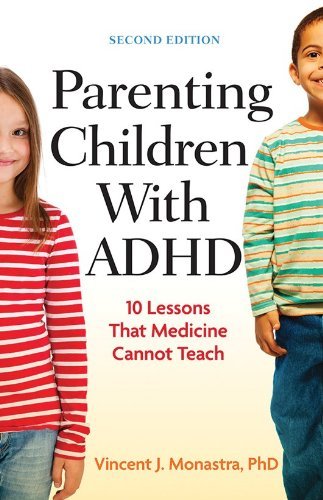Did you know that 9.4% of children in the U.S. are diagnosed with ADHD, making it one of the most common neurodevelopmental disorders in childhood? This condition, characterized by symptoms like inattention, hyperactivity, and impulsivity, can significantly impact a child’s academic performance, social interactions, and self-esteem1.
Effective management often involves a combination of behavioral therapy, medication, and parental support. Studies show that early intervention can improve outcomes for up to 70% of children2. This guide will help you understand the signs, explore treatment options, and provide practical parenting tips to support your child.
Key Takeaways
- ADHD affects 9.4% of children in the U.S., with boys diagnosed more frequently than girls1.
- Symptoms often appear before age 7 and can impact school performance and self-esteem.
- Early diagnosis and treatment improve outcomes for up to 70% of children2.
- Behavioral therapy and parental support are key components of effective management.
- Untreated ADHD increases the risk of school failure and low self-esteem1.
Overview of ADHD in Children
ADHD, a common neurodevelopmental condition, impacts many children in the U.S. It is characterized by challenges with attention, hyperactivity, and impulsivity. These symptoms can affect a child’s ability to focus, complete tasks, and interact socially3.
What is ADHD?
Key Statistics and Impact
Here’s a quick overview of the key impacts:
Early diagnosis and a combination of medication and behavioral therapy can significantly improve outcomes for children with this condition4. Recognizing the signs and seeking professional help is crucial for their long-term success.
Common Signs and Symptoms of ADHD
Children with ADHD often exhibit behaviors that go beyond typical childhood restlessness. These behaviors can be grouped into three main categories: inattentiveness, hyperactivity, and impulsivity. Recognizing these signs early can help parents and caregivers provide the right support.
Inattentiveness and Hyperactivity
Inattentiveness in children often shows up as difficulty focusing on tasks or following instructions. They may daydream frequently, lose items, or struggle to complete schoolwork5. Hyperactivity, on the other hand, involves constant movement. Children may fidget, talk excessively, or have trouble sitting still6.
These symptoms can make it hard for a child to succeed in school or complete tasks at home. For example, they might forget homework or struggle to stay organized5.
Impulsive Behavior Patterns
Impulsivity is another key sign. Children may interrupt conversations, act without thinking, or have trouble waiting their turn6. This can lead to social challenges, as peers may find these behaviors disruptive.
It’s important to note that these symptoms can vary from one child to another. Some may show more inattentiveness, while others may be predominantly hyperactive or impulsive5.
- Inattentiveness: Difficulty focusing, frequent daydreaming, and disorganization.
- Hyperactivity: Constant movement, fidgeting, and restlessness.
- Impulsivity: Interrupting others, acting without thinking, and difficulty waiting.
Understanding these signs is the first step toward helping a child thrive. Early identification and intervention can make a significant difference in their academic and social development5.
Exploring the Diagnosis Process for ADHD
Diagnosing ADHD in children involves a detailed and multi-step process to ensure accuracy. This condition requires careful evaluation to distinguish it from other disorders with similar symptoms. A comprehensive assessment includes clinical interviews, behavioral observations, and input from parents and teachers7.
Evaluation Procedures and Criteria
The diagnosis process begins with a clinical interview to gather information about the child’s behavior and developmental history. Healthcare providers use standardized rating scales to assess symptoms like inattention, hyperactivity, and impulsivity8. These symptoms must persist for at least six months and appear in multiple settings, such as home and school7.
Gathering Insights from Caregivers and Teachers
Parents and teachers play a crucial role in the diagnosis process. They provide valuable insights into the child’s behavior across different environments. Behavioral information from these sources helps clinicians understand how symptoms impact daily functioning7.
Studies show that about 90% of clinicians use behavior rating scales during evaluations8. This collaborative approach ensures a more accurate diagnosis and helps tailor treatment plans to the child’s specific needs.
A thorough evaluation is critical for an accurate diagnosis. Early identification allows for timely intervention, which can significantly improve outcomes for children with this condition7.
Treatment Approaches for Child ADHD
Effective treatment for children with attention challenges involves a combination of behavioral therapy and medication. These approaches help manage symptoms like hyperactivity and impulsivity, improving daily functioning and academic performance9.
Behavioral Interventions and Therapy
Behavioral therapy is a cornerstone of treatment, especially for younger children. The American Academy of Pediatrics recommends it as a first-line approach for kids under 69. Techniques like Parent-Child Interaction Therapy (PCIT) focus on improving communication and reducing disruptive behaviors.
Studies show that structured routines can improve behavior by up to 40%, while positive reinforcement strategies enhance motivation in 60-70% of cases9. These methods help children develop self-regulation skills and build confidence.
Medication Options and Management
For children aged 6 and older, medication is often combined with therapy for optimal results. Stimulant medications, such as Adderall XR and Ritalin, are the most commonly prescribed10. They work by increasing focus and reducing impulsivity.
Non-stimulant options like Strattera are also available, though they may take several weeks to show full effects10. Regular follow-ups with a healthcare provider are essential to monitor progress and adjust dosages as needed.
Tailoring Treatments to Individual Needs
Ongoing monitoring ensures that treatments remain effective as the child grows. Adjustments may be needed to address new challenges or changes in symptoms.
| Treatment Type | Key Benefits | Possible Challenges |
|---|---|---|
| Behavioral Therapy | Improves self-regulation, reduces disruptive behaviors | Requires consistent effort from parents and caregivers |
| Stimulant Medication | Quickly improves focus and attention | May cause side effects like decreased appetite |
| Non-Stimulant Medication | Effective for long-term management | Takes time to show full effects |
By combining these approaches and tailoring them to your child’s needs, you can help them thrive both at home and in school10.
Parenting Strategies for Supporting Your Child
Supporting a child with attention challenges requires a thoughtful and structured approach at home. By creating a stable environment and fostering clear communication, you can help manage symptoms and promote positive behavior11.
Creating a Structured Home Environment
Children thrive in environments with consistent routines. Establishing a daily schedule helps reduce distractions and improves focus12. Start by setting clear expectations for tasks like homework, meals, and bedtime. Visual aids, such as charts or calendars, can make routines easier to follow.
Effective Communication and Interaction
Clear and positive communication is key to supporting your child. Use simple, direct language to give instructions. Instead of saying, “Clean your room,” try, “Put your toys in the bin and your clothes in the drawer.” This approach reduces confusion and encourages cooperation11.
Praise and rewards can reinforce good behavior. For instance, a sticker chart for completing tasks can motivate your child. Research shows that positive reinforcement increases desired behaviors by 30-40%12.
Collaboration with healthcare providers is also essential. Regular check-ins ensure that treatment plans are effective and tailored to your child’s needs13. By working together, you can create a supportive network that helps your child thrive.
ADHD in School-Aged Children: Strategies and Supports
Helping a child thrive in school requires tailored strategies and strong collaboration between parents, educators, and specialists. With the right supports, children with attention challenges can succeed academically and socially. Schools play a critical role in providing accommodations and fostering an inclusive learning environment14.
Classroom Accommodations
Classroom accommodations are essential for children who struggle with attention and behavior. These modifications can include seating arrangements, extended time on tests, and frequent breaks. For example, shorter assignments that provide a little challenge without being too hard are recommended15.
Organizational tools, such as homework folders, can help limit the number of items a child has to track. Studies show that structured behavior plans can lead to a 25% to 50% improvement in classroom behavior15. Positive discipline practices, like immediate feedback and clear expectations, also make routines more predictable and achievable14.
Collaboration with Educators and Specialists
Effective collaboration between parents, teachers, and specialists is key to supporting a child’s educational journey. Regular communication ensures that everyone is on the same page regarding the child’s needs and progress. The Individuals with Disabilities Education Act (IDEA) and Section 504 of the Rehabilitation Act of 1973 provide frameworks for creating individualized education plans (IEPs) and 504 plans14.
Parents often report receiving more services through an IEP than a 504 Plan14. These plans can include accommodations like extended time on tests, modified assignments, and behavioral interventions. Research indicates that parental involvement in education can improve academic outcomes by as much as 30%15.
Teachers can also implement strategies like breaking instructions into 3 to 5 steps and providing frequent feedback. These approaches help children stay focused and engaged in their learning15.
- Seating Arrangements: Place the child near the teacher to minimize distractions.
- Extended Time: Allow extra time for tests and assignments to reduce pressure.
- Frequent Breaks: Short breaks can help maintain focus and reduce fatigue.
- Organizational Tools: Use folders or planners to keep track of assignments and materials.
By combining these strategies and fostering strong partnerships, you can create a supportive environment that helps your child succeed in school16.
Understanding ADHD: The Brain and Behavior Connection
Understanding the neurological basis of attention challenges can provide deeper insights into managing behavior effectively. Research shows that children with this condition often have distinct brain differences that influence their actions and responses17.
Anatomical and Functional Brain Differences
Studies reveal that certain brain structures in children with attention challenges are smaller compared to those without the disorder17. For example, reduced grey and white matter volumes in the frontal lobe are commonly observed. These areas are critical for attention, impulse control, and decision-making.
Functional brain imaging has also shown heightened connectivity in regions related to learning, movement, and emotion18. These differences can explain why children may struggle with focus, hyperactivity, or impulsivity. Understanding these variations helps healthcare providers tailor treatments more effectively.
Long-term Impact from Childhood to Adolescence
The brain differences observed in childhood can have lasting effects into adolescence and adulthood. For instance, the frontal lobe may mature several years later in children with this condition17. This delayed development can impact academic performance, social interactions, and emotional regulation.
Long-term outcomes vary, but early intervention can significantly improve developmental trajectories. Treatments like medication and behavioral therapy can help manage symptoms and support healthy brain development18.
- Neurological Differences: Smaller brain structures and delayed frontal lobe maturation.
- Functional Connectivity: Heightened activity in learning and emotion-related regions.
- Long-term Effects: Impacts on academic, social, and emotional development.
By understanding the brain-behavior connection, you can better support your child’s growth and development. Early diagnosis and tailored treatments are key to helping them thrive17.
Conclusion
Managing attention challenges in children requires a proactive approach to ensure their long-term success. Recognizing signs like inattention, hyperactivity, and impulsivity is the first step. A thorough diagnosis process, involving input from parents and teachers, is essential for accurate identification19.
Effective treatment often combines behavioral therapy and medication. Studies show that about 70% of children respond positively to this dual approach19. Supportive parenting and structured home environments also play a crucial role in managing symptoms.
As children grow, these challenges can persist into adulthood, affecting about 50% of individuals19. Early intervention and ongoing support from qualified providers can make a significant difference. If you suspect attention challenges in your child, seek professional advice to explore tailored solutions.
For more information and resources, consult trusted healthcare providers to ensure your child receives the best care possible.



![The Explosive Child [Sixth Edition]: A New Approach for Understanding and Parenting Easily Frustrated, Chronically Inflexible Children](https://zen-vortex.com/wp-content/uploads/2025/03/the-explosive-child-678x1024.jpg)






